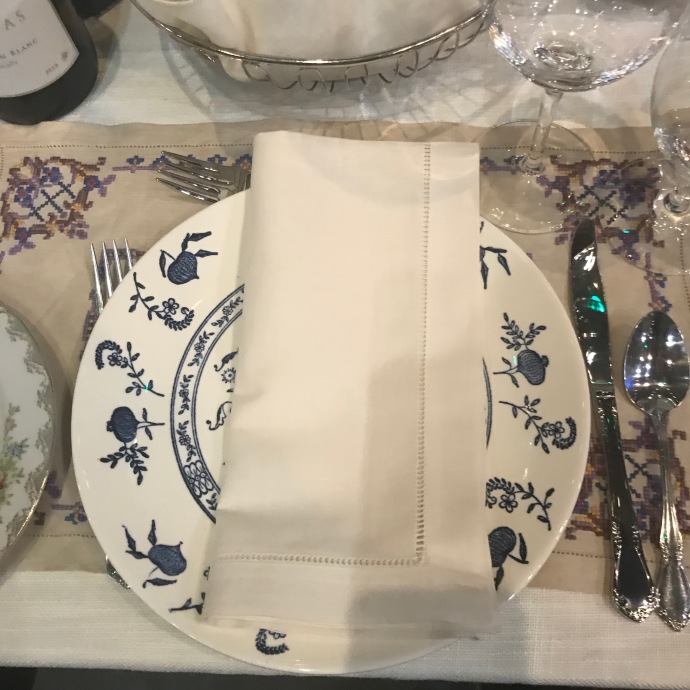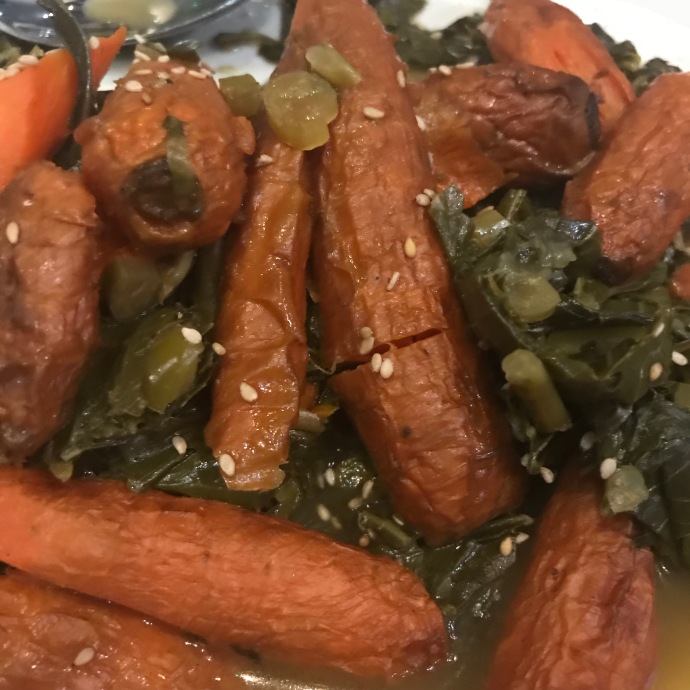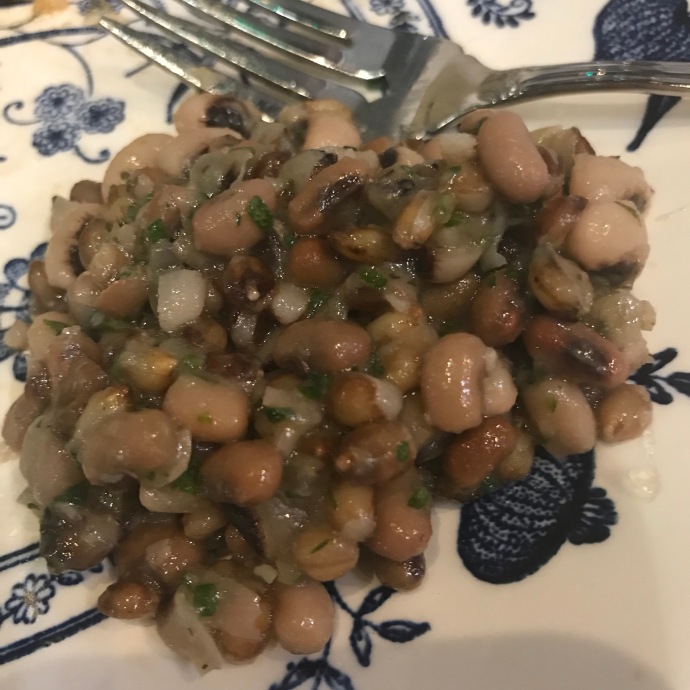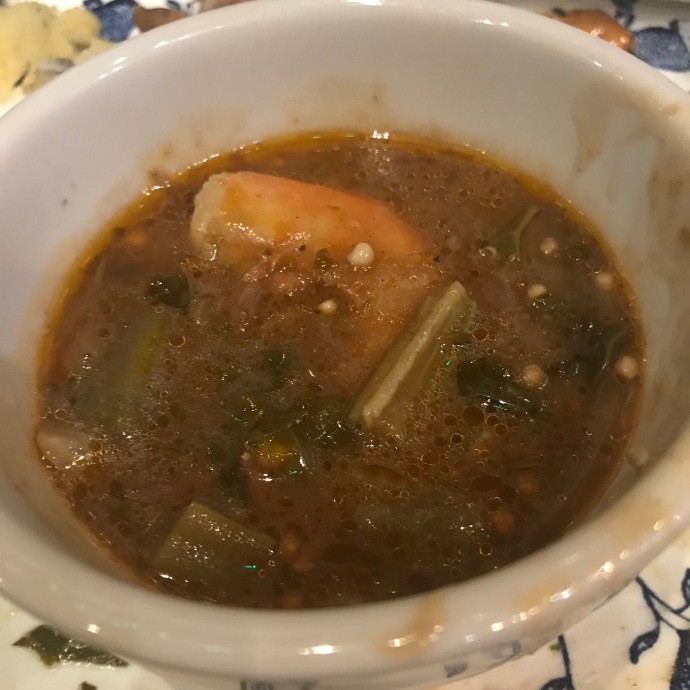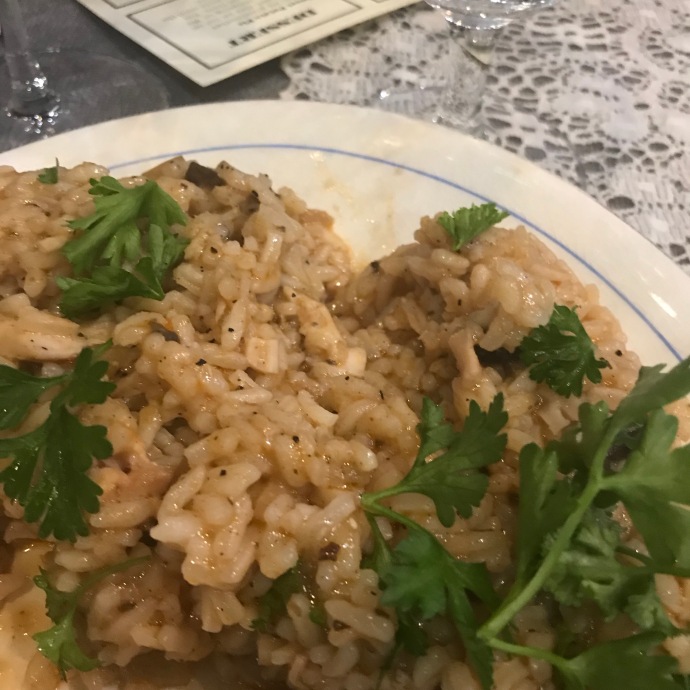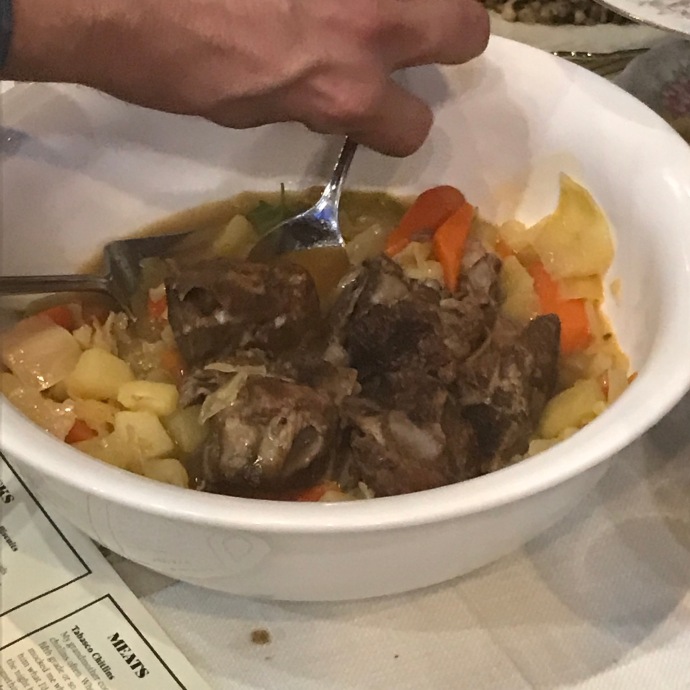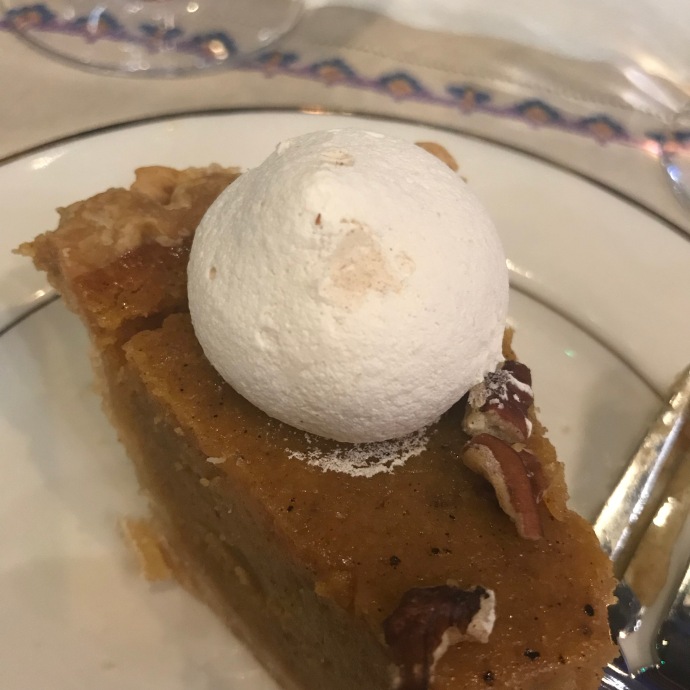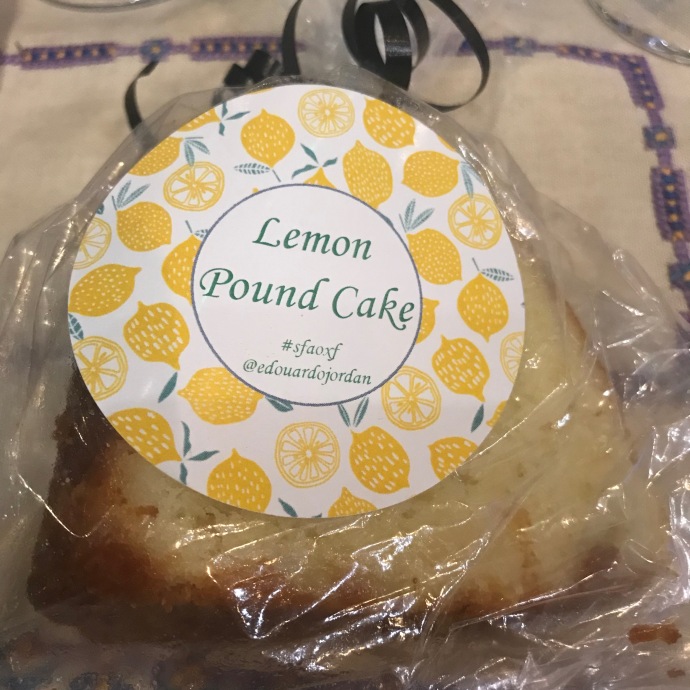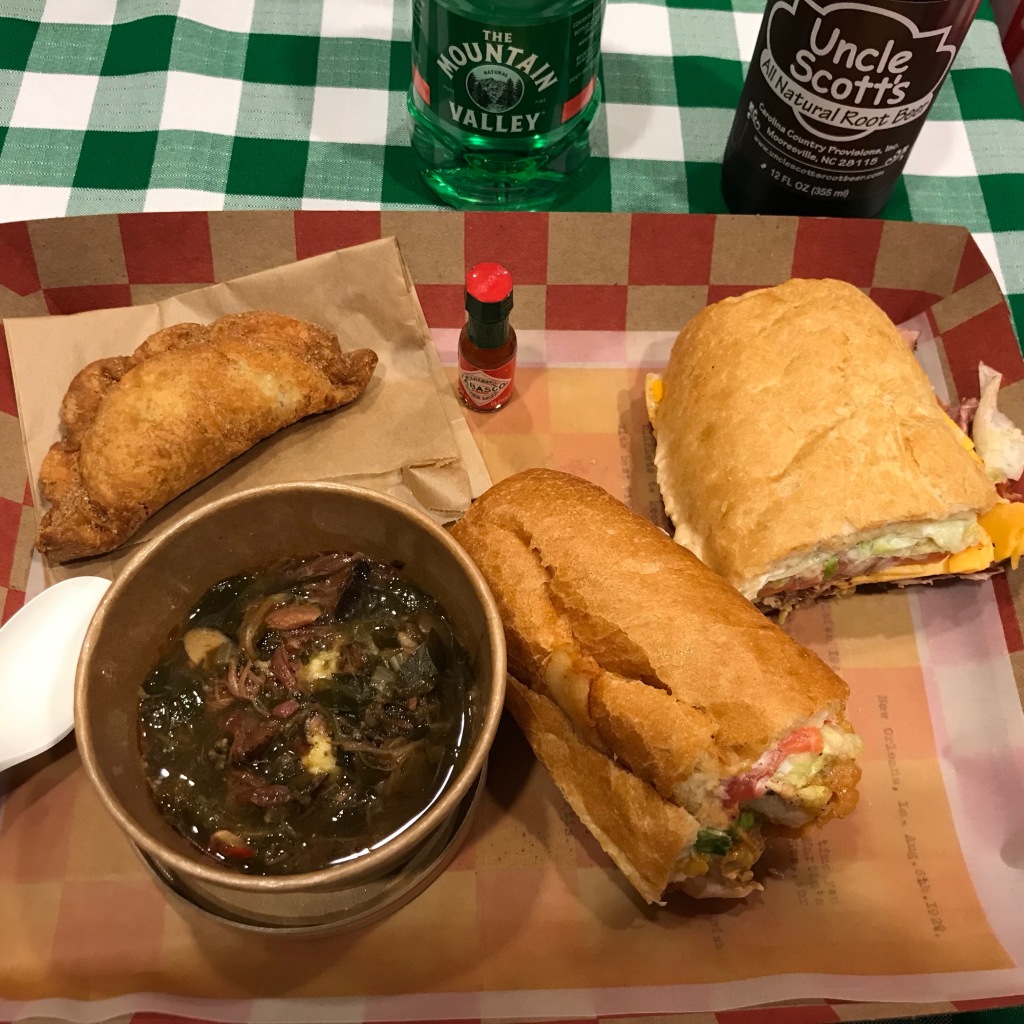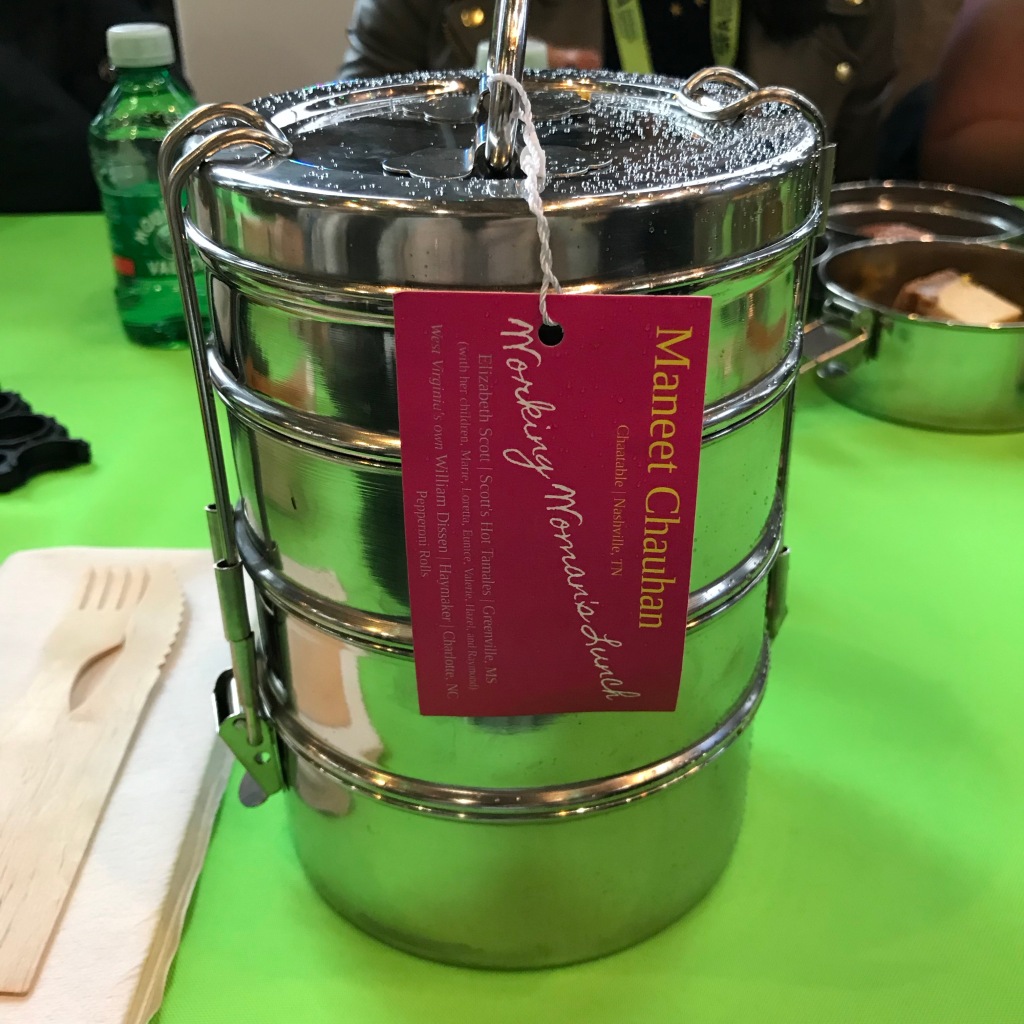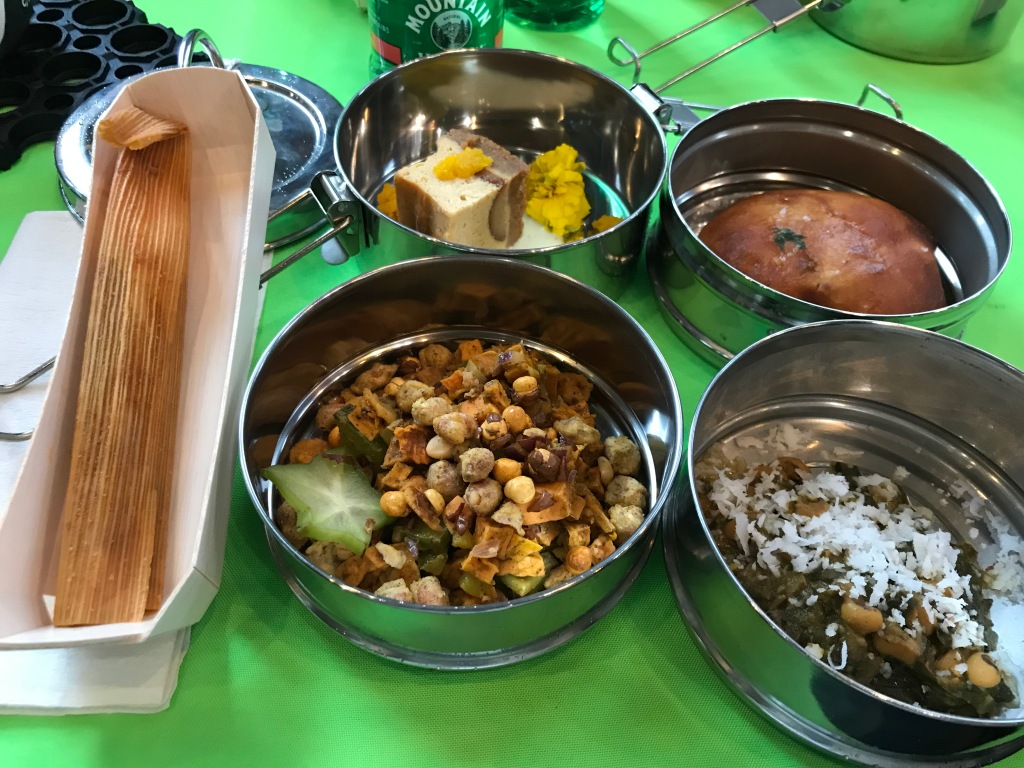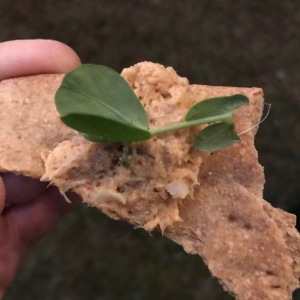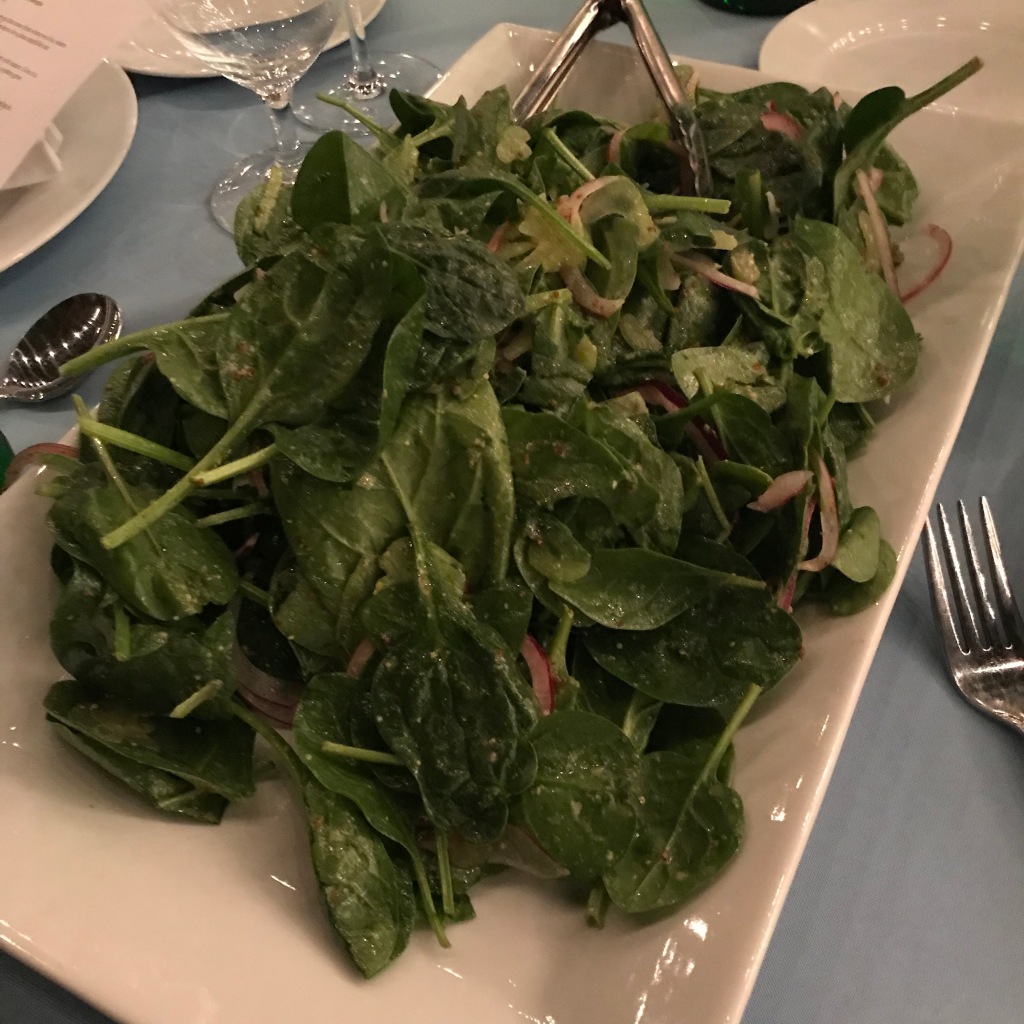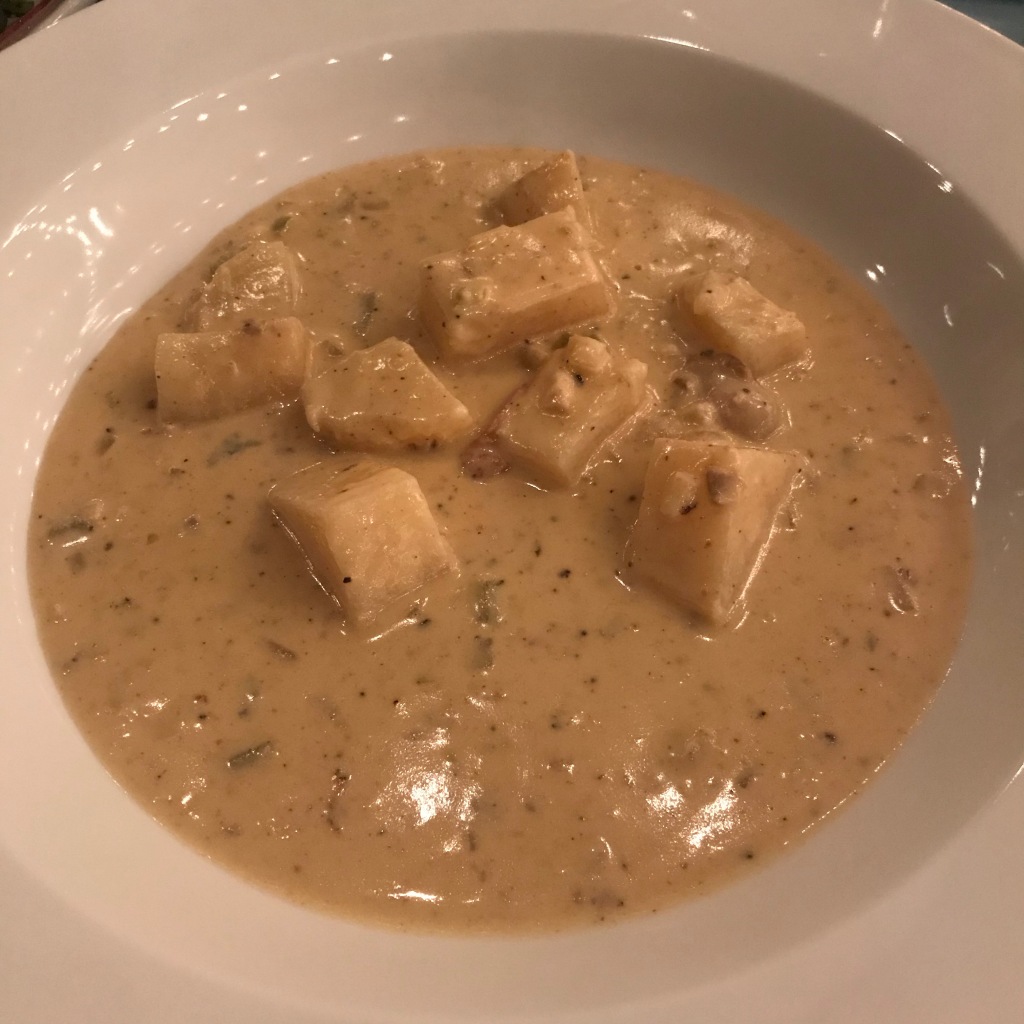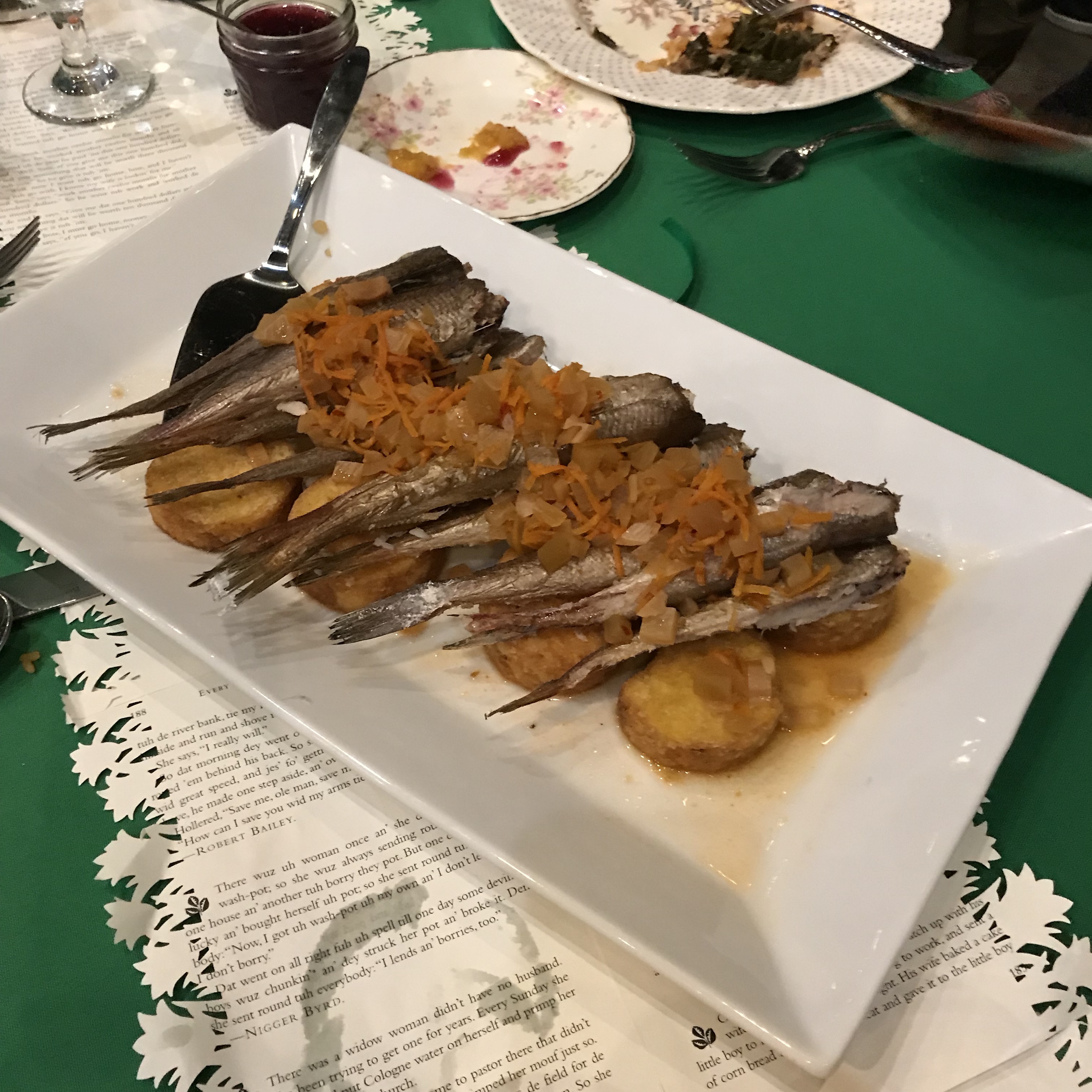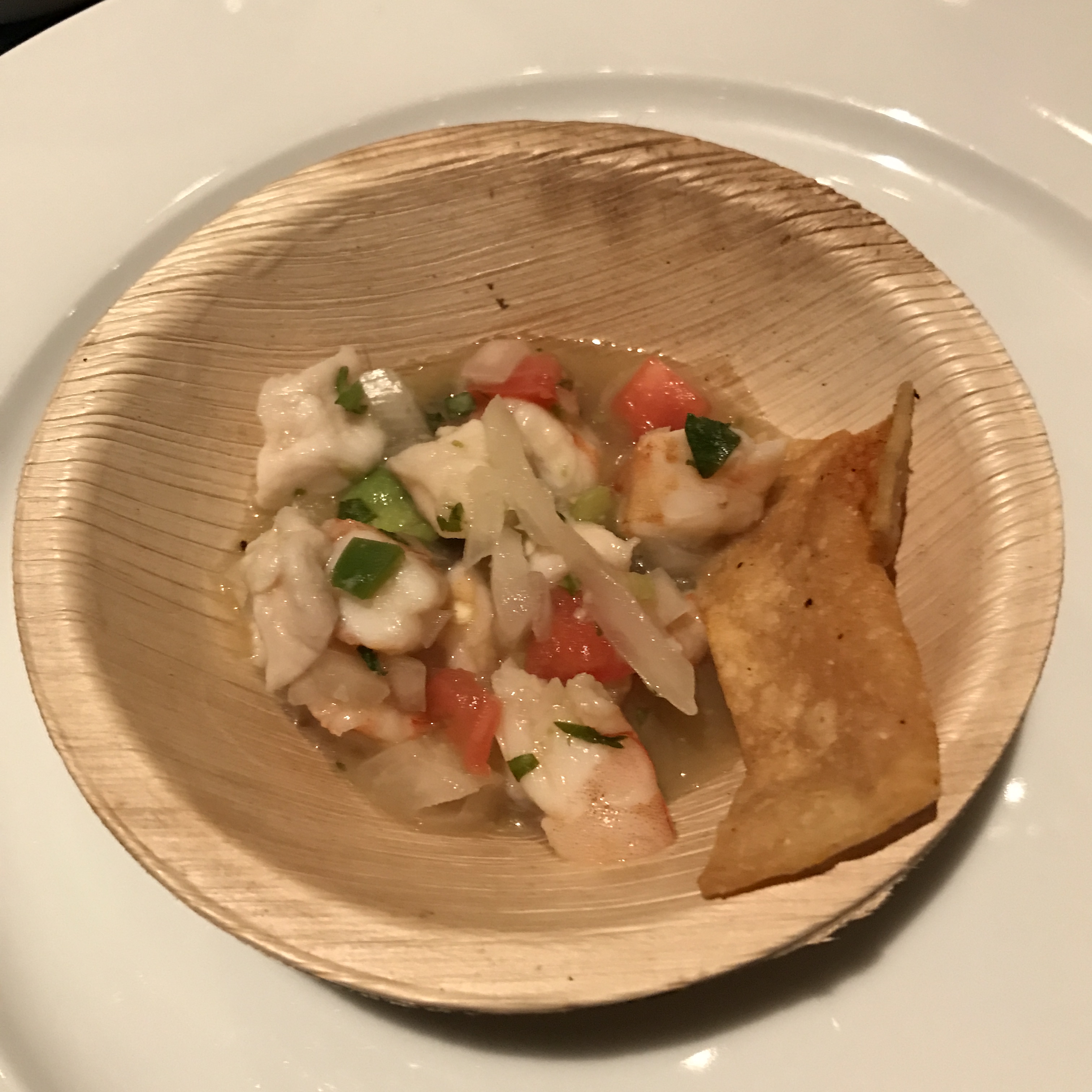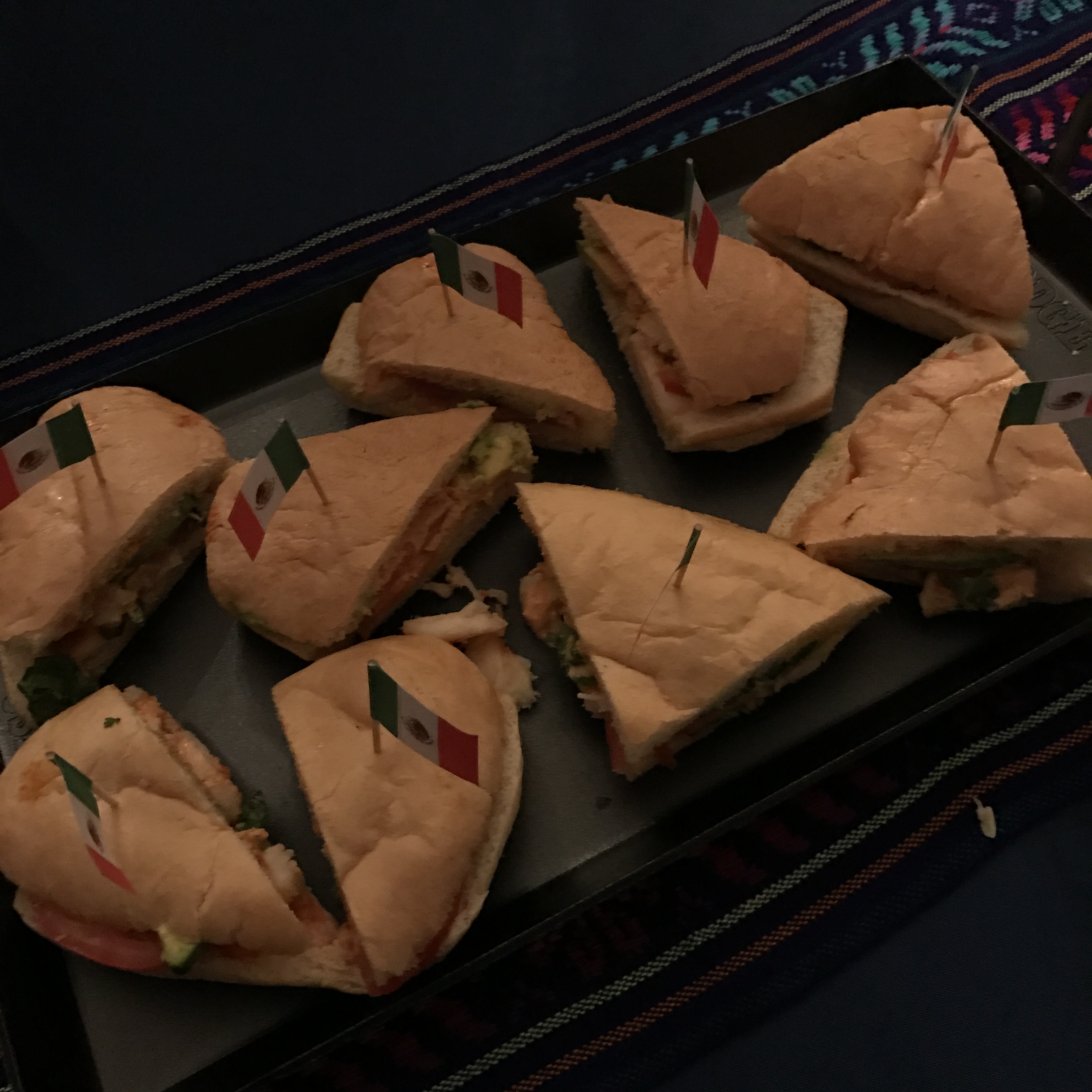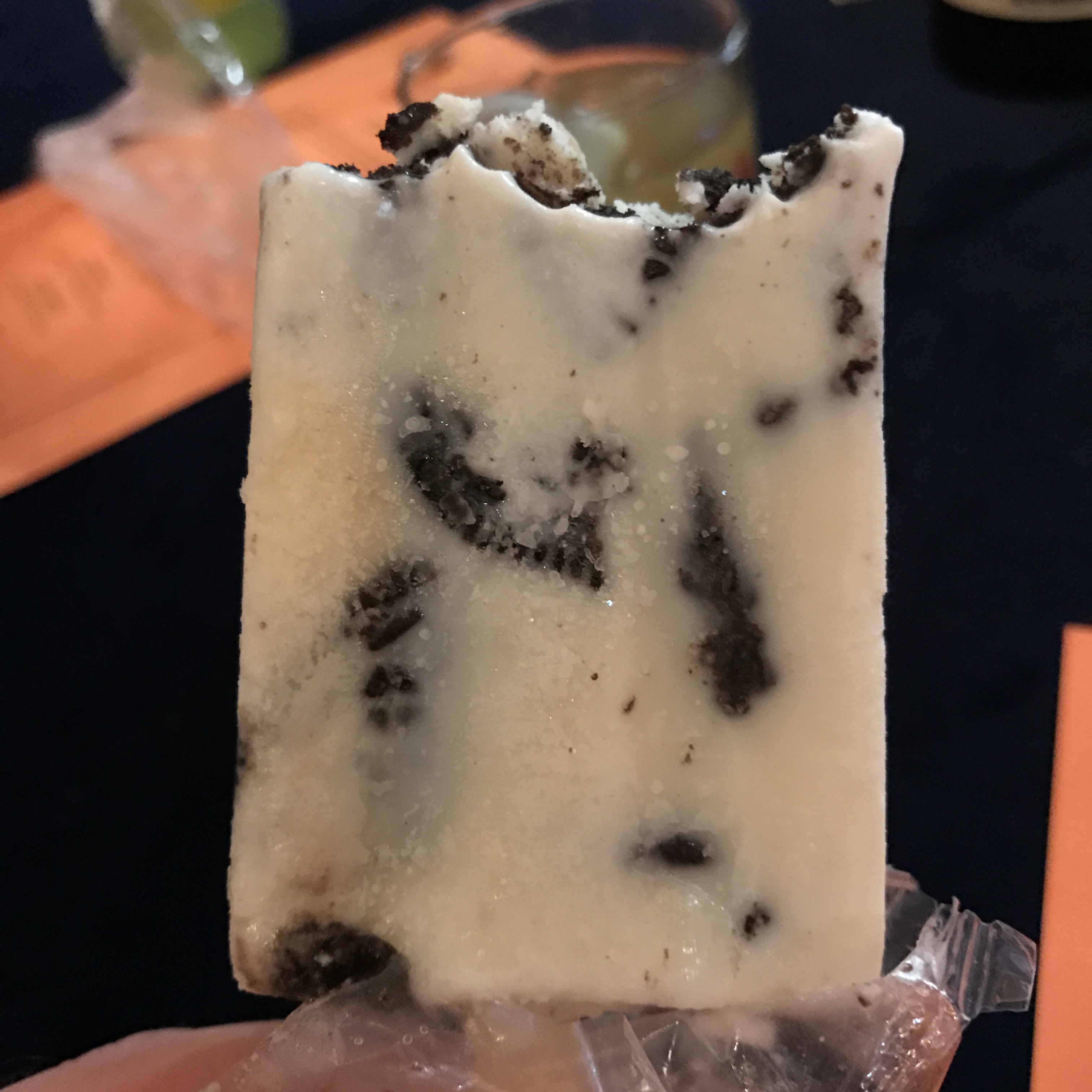(All meals at the SFA Symposium are memorable. This one from 2019 holds a special place in the bucket list arena. As this posts – Lord willin’ and the WiFi works – we’ll be heading towards Day 2 of the 2021 event and I really couldn’t be more ready.)
In my recent review of notable food memories from the past year, I left one extremely significant dish off the list. In fact, it may have been the most memorable of all, and thus, deserved a longer treatment. The Year of Our Lord, 2019, is the year Jay ate his first chitterlings.
It took me 52 years to get to that moment. And now my life will be divided into two eras: pre-chitterlings, and post-chitterlings. Prior to that moment, I knew about them, I knew people who ate them, I occasionally would see buckets of them in the grocery store. I didn’t seek them out, nor did I avoid them. In fact, I don’t know where I would have looked to find them, aside from the aforementioned meat department. I never saw them on a restaurant menu. No food event or festival I’ve ever attended has included them, until just a few months ago, when a platter full was set before me, and I knew it was time to face the music.
Before I go into a lot of detail, however, let’s establish the basics. Most readers probably know what chitterlings are, unless the spelling is throwing you. Perhaps you’ve heard the word pronounced as “chitlins” and because you, too, have never seen them on a restaurant menu, you never thought to explore the etymology of the word. For that reason, for the rest of this column, we’ll just go with chitlins. (Oddly enough, my word processor doesn’t flag that as a misspelled word, so maybe we’re good either way.)
When it comes to the definition, it’s pretty simple. Chitlins are pig entrails. Small intestines of the swine. Hog guts. You get the picture. When it comes to grammar, I confess I’m not entirely sure about singular and plural here. I mostly hear about chitlins – I’m not sure I’ve ever heard someone talk about one chitlin. I’ll just wait until I run into one of my former English teachers around town and they can weigh in on the matter.
Let me set the scene. We were at the Southern Foodways Alliance Symposium last October. When something special is coming, word usually gets out. So we already had an idea that chitlins were on the horizon. And when we arrived at the Powerhouse in Oxford on the last night, ready to share this last meal together, the chef and crew were wearing sweatshirts with “CHITLINS” spelled out in sewn-on letters. There was no hiding it now.
The chef was Eduardo Jordan, originally from Florida, now a chef-owner of several establishments in Seattle, including Junebaby, Salare, and Lucinda Grain Bar. Whether or not you are headed to Seattle anytime soon, I encourage you to check out the websites and menus of each of these places; there’s even an encyclopedia of culinary terminology on the Junebaby website that’s a fun read.
Junebaby is an outpost of Southern food in the great Northwest. In fact, some of the dishes we enjoyed that night are on the Junebaby menu. Some are not. (See the aforementioned and soon-to-be-mentioned again chitlins.) The menu that night, for the Maggie Jordan Memorial Supper (named after the chef’s grandmother), a Tabasco Celebration, was extensive.
To begin, there were boiled peanuts, buttermilk biscuits with cane syrup, fried smelt, and pickled pigs feet. Not a lot of surprises here. Loved the biscuits, of course. I have learned to appreciate boiled peanuts. A friend seasoned his baked beans with pigs feet once. Many fried fish have met their end because of me, though these may have been the smallest I’ve eaten.

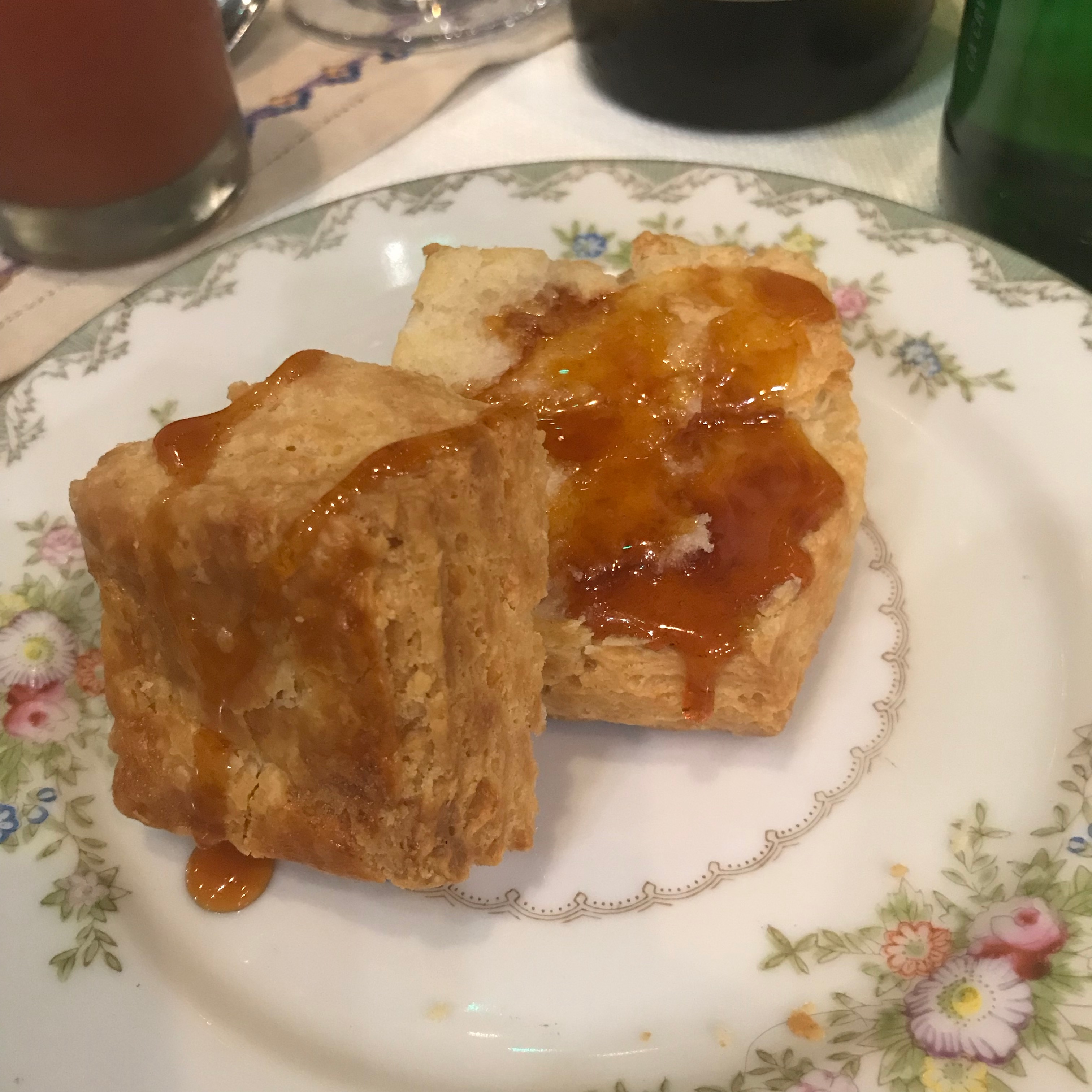
In the Vegetables and Grains portion of the menu, we had steamed okra with sorghum Tabasco chili vinaigrette, and thinking back, this may have been my first encounter with steamed okra – I’ve had it just about every other possible way. We also had peas, beans and grains salad with preserved lemon – I really liked this take. My favorite was the smoked carrots, collards and Anson Mills benne seeds. The smoked carrots really made it work.
To represent seafood, we had shrimp gumbo, which he described as more akin to okra and tomato stew, “studded with some of my favorite Florida seafood.” Very tasty. Poultry came to the table as chicken purloo, a rice-based dish. Rib-stickin’ good. The beef offering, however, was my favorite: neckbones with Tabasco cabbage, potatoes and carrots. The meat in the crevices of the curvy vertebrae was incredibly flavorful – I’ve been missing out.
For dessert, a slice of sweet potato pie with a bit less sweet than I’m accustomed to, a bit more spice, and a ball of meringue on top. For the road, a “parting gift”: a slice of lemon pound cake from his grandmother’s recipe, subbing his creme fraiche for her sour cream.
And now the pork. We’re back to the chitlins. At the table, to my left, was a chef who’d spent some time in Amory as a boy, and had been signing his cookbook that afternoon at Square Books. (I grabbed one the next day.) Directly across from me was a Hollywood writer/producer who grew up in Virginia. Next to him was the admissions director from my days at the Ole Alma Mater – I hadn’t seen him since. The Wife was to my right. Opinions varied, but it was Hollywood who was the most familiar and relaxed about them. Apparently he had eaten them relatively often in Virginia. The Wife said they weren’t as bad as she thought they’d be. I thought the texture was interesting, but the taste? Naw. (No reflection on chef. If I go to Seattle, I’ll be looking for another Chef Jordan meal.) I will add, should someone offer me a seriously crispy fried version somewhere down the line, I might try them again. Otherwise, with my one bite I have vigorously checked chitlins off the bucket list and am now firmly established in the post-chitlins era.

